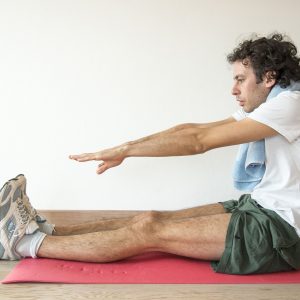We often hear this statement from people about stretching. Despite doing regular stretching exercises, they often find that they still feel restricted or tight in the same muscles. So how can you slightly alter the way you stretch to try and get lasting benefits and have permanent changes?
When you stretch a muscle you are trying to make sure that the muscle is long enough to enable the joint/s associated with that muscle can move throughout their full range. However the ability of the muscle to lengthen to this point is not the only factor that affects movement.
Often a lack of stability or a faulty movement pattern can be the culprits that keep a muscle continually tightening up despite repeated attempts at stretching. Lets assume you roll an ankle. Your body instinctively knows that you still need to attempt to walk to move and function. It also knows that if you continue to walk normally that it will be painful. Instead your body puts more pressure on certain muscles such as the calf and the hamstring, and takes the pressure off some of the others such as the glut.
Over time your ankle gets better and you start to walk more evenly, but your body still holds on to a part of the survival pattern that it created, and your calf muscle and hamstring muscle remain tight.
Over time your ankle gets better and you start to walk more evenly, but your body still holds on to a part of the survival pattern that it created, and your calf muscle and hamstring muscle remain tight.
How do we stretch effectively and address the faulty pattern?
When you stretch out the muscle, immediately after you finish the stretch is it important to actively engage the muscle. A couple of examples are as follows:
Tight hamstrings?
Try stretching the hamstring by reaching down towards the toes and then immediately after try to squeeze your glut muscle (your buttock).
Tight chest and shoulder area?
Try stretching out the chest through a doorway and then immediately after try to squeeze your arm into the side of your body.
Tight neck area?
Try stretching out the back of the neck by gently bringing the side of the head towards the shoulder, and also diagonally down. Immediately afterwards try to gently tuck your chin and head back.

